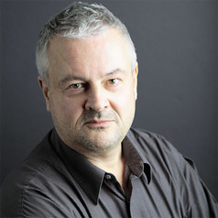project
Representing Biology as Process
1 January 2017 - 1 January 2020

PI/s in Exeter: Professor John Dupré
CI/s in Exeter: Dr Gemma Anderson
Research partners: Dr James Wakefield, Biosciences, University of Exeter
Sponsor(s): AHRC
Project webpage(s)
Representing Biology as Process
About the research
The question – whether we should think of the world as consisting of entities statically defined by essential properties (i.e. in philosophical jargon, “substances”), or as processes, that undergo and persist precisely because of change – is a fundamental metaphysical dichotomy, debated since the pre-Socratics. Since the rise of atomism in the seventeenth century the substance view has dominated scientifically grounded philosophy. John Dupré’s ERC-funded project, A Process Ontology for Contemporary Biology, develops the thesis that for biology, at least, this has been a profound mistake (Dupré 2012: Nicholson and Dupré, in press). Dupré argues that living systems are always dynamic at multiple spatial and temporal scales and their persistence, far from being merely the continued possession of essential properties, is the result of the finely articulated interplay of multiple processes.
Visual representation is essential both to the practice and the communication of science. However, whereas drawing in the past played a central role in fields such as morphology and embryology, the rise of photographic and digital technologies and the growing emphasis on molecules as opposed to whole organisms have increasingly marginalized drawing practices. Therefore, a serious problem faced in the development of a fully processual biology is that most visual representation strongly suggests a realm of static things. For example, the presentation of an organism will be of a particular developmental ‘stage’, typically the mature adult, which confounds the fact that this is a momentary temporal stage of the developmental process. Even where representation of something as plainly dynamic as metabolism, for example, will include arrows representing time, the natural reading will be of transitions between a fixed array of things (instances of chemical kinds). Moreover, while visual images or ‘visual explanations’ (Tufte 1997) in science depend on a variety of graphic devices ranging from the use of video, and photography to the use of computational graphic software, simulation and hand-drawing, these means of making images largely depend on mechanistic models (for, or of, their objects) which are already intertwined with their methods of production.
The decline of drawing in scientific practice is epitomised by Wakefield’s research field, cell division and mitosis. Whereas 20 years ago, as a PhD student, his learning was centred around direct participation, through microscope-based observation and drawing of cells, his own PhD students are now further removed, watching 2D representations of cells on computer screens and printing out screen-shots. For the last 5 years, his interest in this distinction has grown, leading to an exploratory collaboration with the PI and, through this application, the Co-I. Anderson’s work over a number of years has highlighted the epistemic costs of the decline of graphic skills in the Life Sciences. She has researched the ways in which scientists have used drawing as a way of developing deep insights into their subject matters, and in her own practice, under the rubric of ‘Isomorphology’, she has developed classificatory methods that highlight formal parallels cutting across the traditional boundaries of animal, mineral and vegetable. This work has been carried out in collaboration with a variety of scientists and museum curators and has resulted in residencies, exhibitions, talks and workshops. Building on the Isomorphology project, her more recent work, guided in part by extensive discussions with Dupré, has begun to explore ways of representing biological process, under the new rubric of Isomorphogenesis.
In line with the growing interest in process-centred understandings of biology, the present project will address the need for novel image-making practices to provide more intuitively dynamic representations of living systems through an innovative collaboration between art, biology and philosophy.

